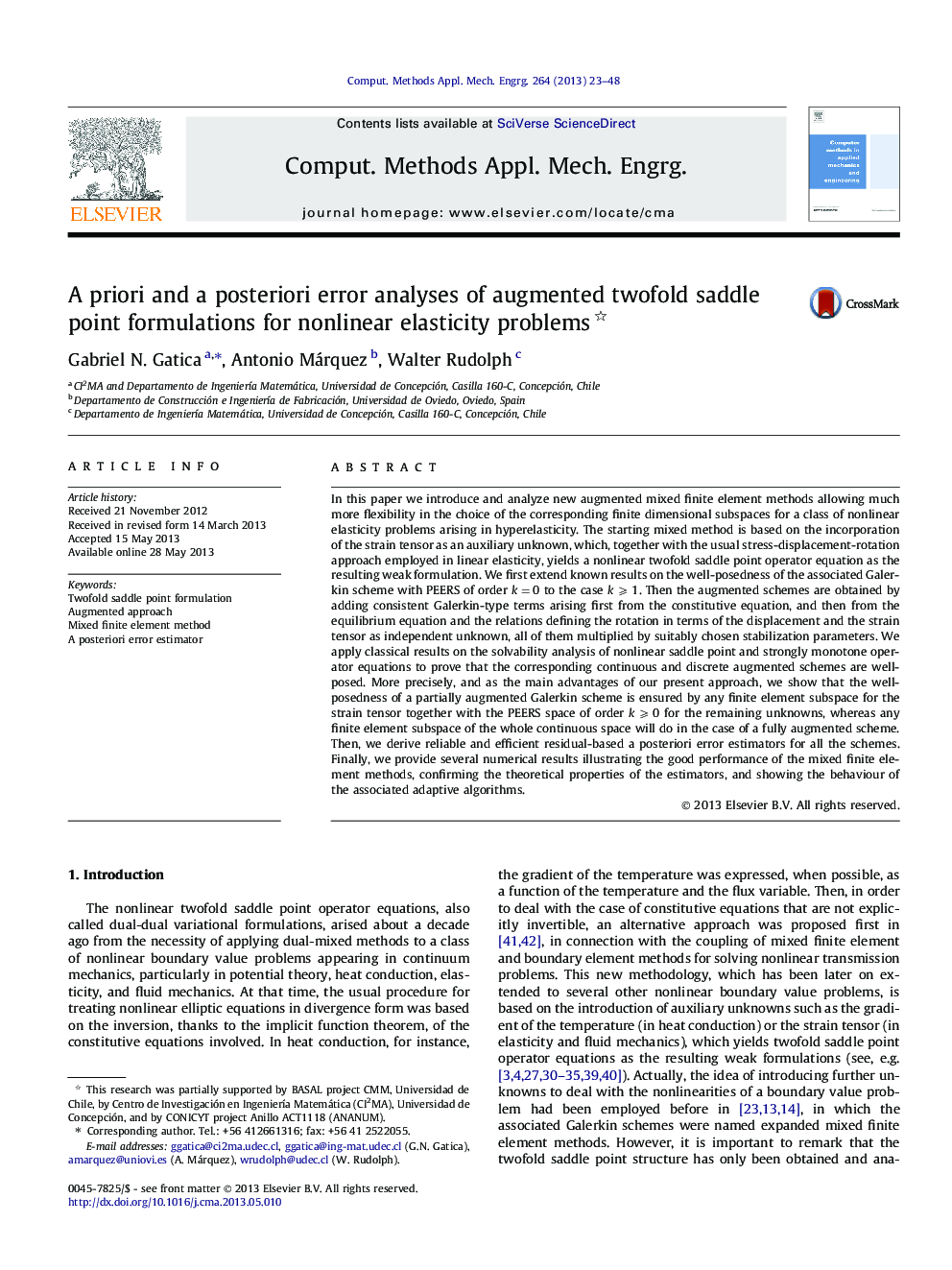| Article ID | Journal | Published Year | Pages | File Type |
|---|---|---|---|---|
| 6917819 | Computer Methods in Applied Mechanics and Engineering | 2013 | 26 Pages |
Abstract
In this paper we introduce and analyze new augmented mixed finite element methods allowing much more flexibility in the choice of the corresponding finite dimensional subspaces for a class of nonlinear elasticity problems arising in hyperelasticity. The starting mixed method is based on the incorporation of the strain tensor as an auxiliary unknown, which, together with the usual stress-displacement-rotation approach employed in linear elasticity, yields a nonlinear twofold saddle point operator equation as the resulting weak formulation. We first extend known results on the well-posedness of the associated Galerkin scheme with PEERS of order k=0 to the case k⩾1. Then the augmented schemes are obtained by adding consistent Galerkin-type terms arising first from the constitutive equation, and then from the equilibrium equation and the relations defining the rotation in terms of the displacement and the strain tensor as independent unknown, all of them multiplied by suitably chosen stabilization parameters. We apply classical results on the solvability analysis of nonlinear saddle point and strongly monotone operator equations to prove that the corresponding continuous and discrete augmented schemes are well-posed. More precisely, and as the main advantages of our present approach, we show that the well-posedness of a partially augmented Galerkin scheme is ensured by any finite element subspace for the strain tensor together with the PEERS space of order k⩾0 for the remaining unknowns, whereas any finite element subspace of the whole continuous space will do in the case of a fully augmented scheme. Then, we derive reliable and efficient residual-based a posteriori error estimators for all the schemes. Finally, we provide several numerical results illustrating the good performance of the mixed finite element methods, confirming the theoretical properties of the estimators, and showing the behaviour of the associated adaptive algorithms.
Related Topics
Physical Sciences and Engineering
Computer Science
Computer Science Applications
Authors
Gabriel N. Gatica, Antonio Márquez, Walter Rudolph,
